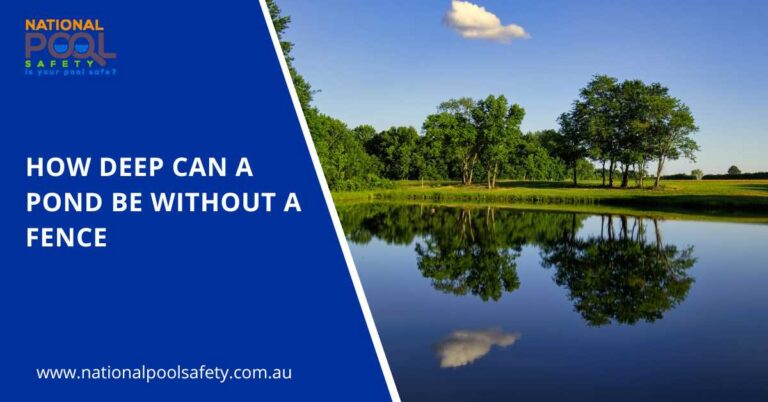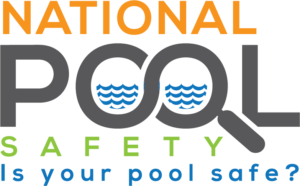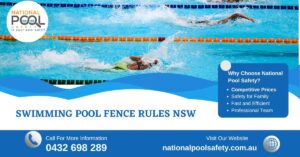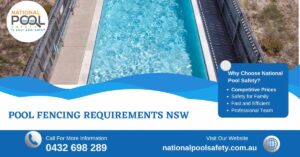How Deep Can a Pond Be Without a Fence

How Deep Can a Pond Be Without a Fence
Pond safety is a crucial consideration for any property owner. Whether you have a decorative garden pond, a fish pond, or a larger water feature, understanding the regulations and guidelines regarding pond depth and fencing is essential. This article explores how deep a pond can be without requiring a fence, taking into account safety, liability, and legal considerations.
To learn more about our comprehensive pool safety services, visit our Swimming Pool Inspection Services page.
II. Understanding Pond Depth Regulations
The depth of a pond can significantly influence the need for safety measures, including fencing. Generally, ponds deeper than 18-24 inches (45-60 cm) may pose a higher risk and often require additional safety measures. However, regulations vary by region, so it’s important to consult local guidelines.
A. General Guidelines for Pond Depth
Most regions have specific guidelines that dictate when a pond must be fenced. These guidelines often consider factors such as the pond’s location, purpose, and depth.
B. Regional and Local Regulations
Local regulations can differ significantly. For example, some areas may require a fence for any pond deeper than 18 inches, while others might set the threshold at 24 inches or more. Always check with your local government or municipal office for the most accurate information.
C. Factors Influencing the Need for a Fence Based on Depth
Several factors can affect whether a pond needs a fence, including its proximity to public spaces, the presence of children or pets, and the type of property (residential, commercial, etc.).
III. Factors Affecting the Need for a Fence
A. Safety Considerations
Safety is the primary reason for requiring a fence around a pond. Deep ponds pose a drowning risk, particularly for young children and pets.
B. Liability and Legal Responsibilities
Property owners can be held liable for accidents that occur in or around their pond. Ensuring your pond meets local safety regulations can help mitigate this risk.
C. Impact on Wildlife and Environment
Ponds can attract wildlife, which can be both beneficial and problematic. Fencing can help protect both the pond and the wildlife by preventing accidental falls or contamination.
IV. Depth and Safety Concerns
A. Minimum Depth for a Pond
The minimum depth for a pond can vary based on its intended use:
- Fish Ponds: Typically require at least 24 inches of depth to support fish life.
- Decorative Ponds: Can be shallower but still need to consider safety.
B. Shallow vs. Deep Ponds: Safety Implications
Shallow ponds are generally safer but still require precautions. Deep ponds necessitate more stringent safety measures due to the increased risk of drowning.
C. Risk Assessment Based on Depth
Conducting a risk assessment can help determine the necessary safety measures. This includes evaluating the pond’s depth, access points, and surrounding environment.
V. Best Practices for Pond Safety
A. Regular Maintenance and Inspection
Regularly inspecting and maintaining your pond ensures that safety measures are always up to date and effective.
B. Community Awareness and Involvement
Involving the community in pond safety can foster a culture of vigilance and care.
C. Emergency Preparedness
Having a plan in place for emergencies, such as rescue equipment and contact numbers, can save lives.
VI. FAQ
Do I need a fence around a pond?
- The need for a fence depends on the pond’s depth, location, and local regulations. Generally, ponds deeper than 18-24 inches may require a fence.
What is the minimum depth for a pond?
- The minimum depth depends on the pond’s purpose. Fish ponds typically need at least 24 inches, while decorative ponds can be shallower.
Do you have to have a fence around a pond?
- Not necessarily. Alternatives such as natural barriers, pond covers, and safety signage can sometimes suffice, depending on local regulations and the specific situation.
What are the best safety measures for a pond?
- Regular maintenance, proper fencing, natural barriers, pond covers, clear signage, and community awareness are all effective safety measures.
How can I make my pond safe for children and pets?
- Consider installing a fence, using a pond cover, and educating children and visitors about pond safety.
What are the legal requirements for pond fencing in different regions?
- Legal requirements vary, so check with local authorities to ensure compliance with regional regulations.
VII. Conclusion
Balancing safety with the aesthetic and functional benefits of a pond is essential. While depth plays a significant role in determining the need for a fence, other factors such as local regulations, safety considerations, and available alternatives should also be considered. Always prioritize safety to create a beautiful and secure pond environment.




